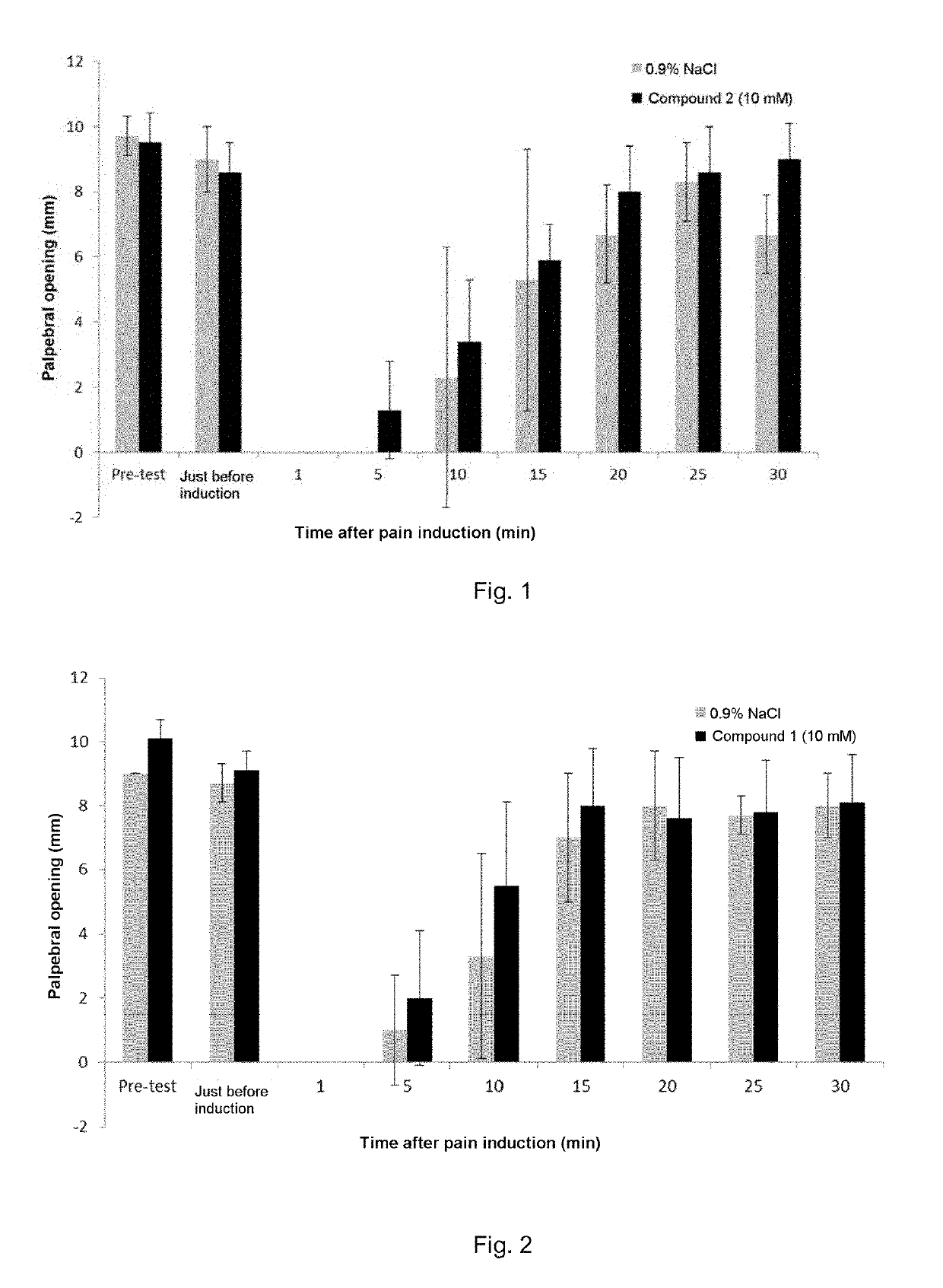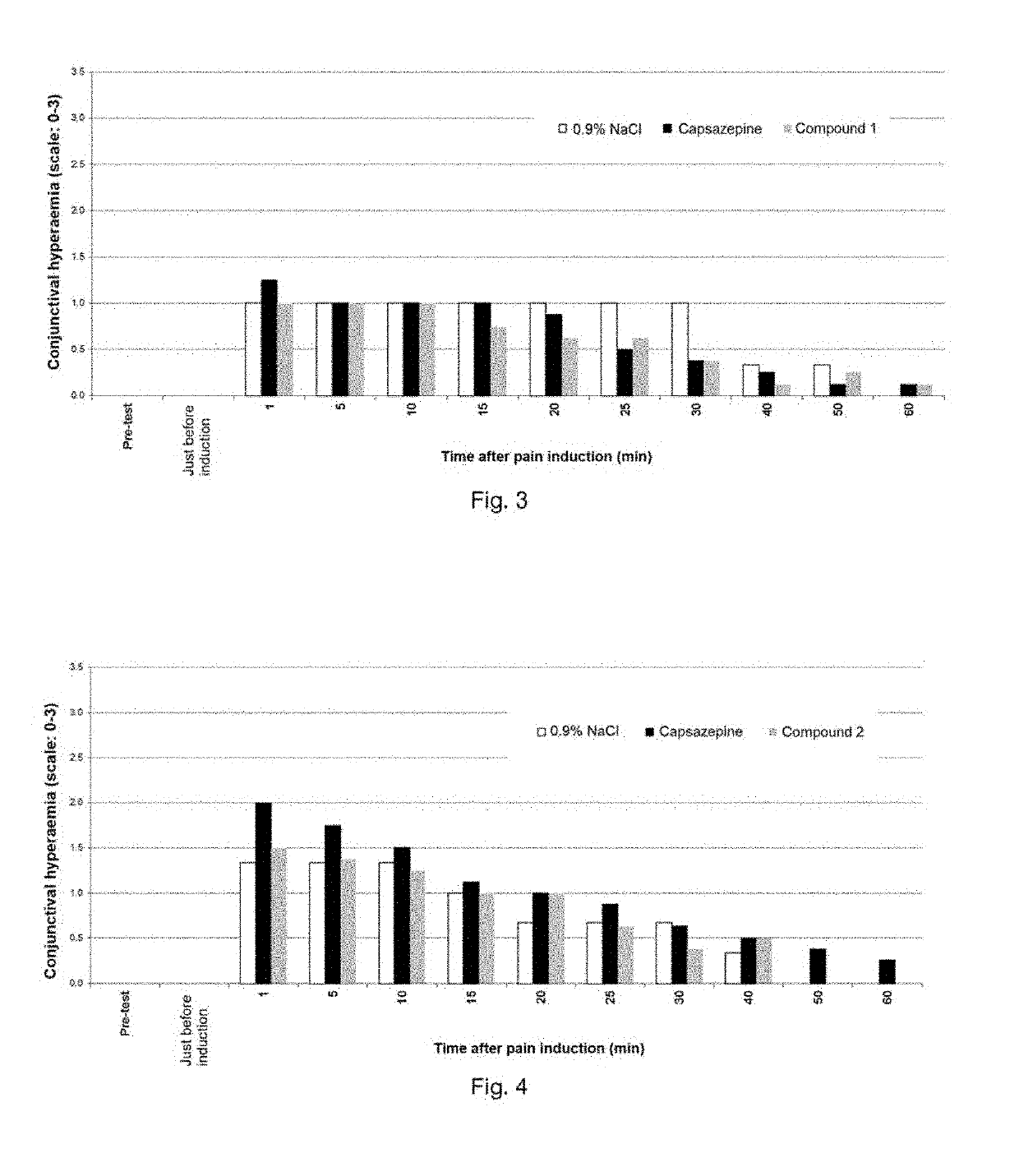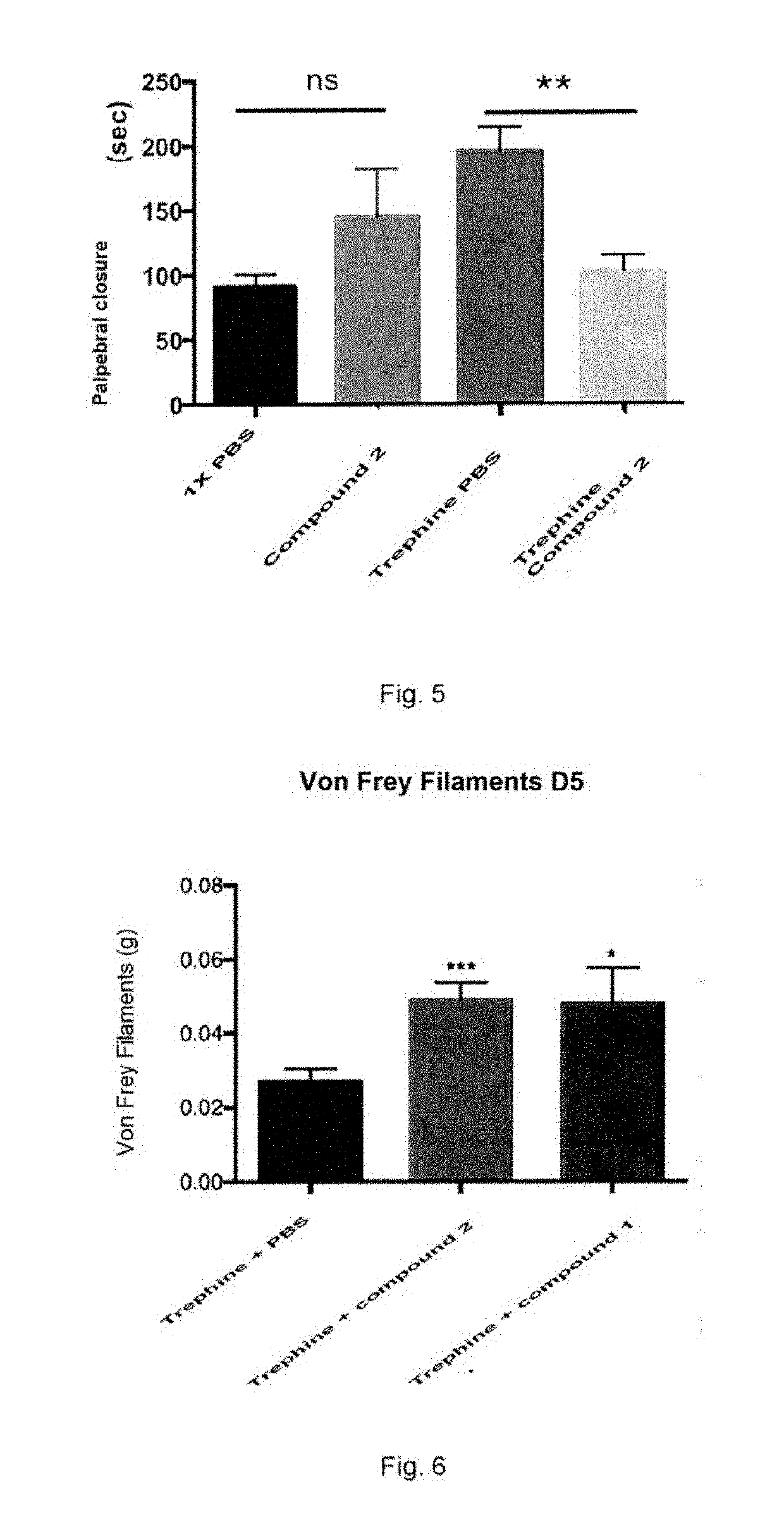Methods of Treating Eye Pain With Aminophosphinic Derivatives
a technology of aminophosphine and derivatives, applied in the field of prevention and treatment of eye pain, can solve the problems of limited efficacy of treatment, systemic local side effects, and substantial limitation of use, and achieve the effect of preventing or relieving eye pain
- Summary
- Abstract
- Description
- Claims
- Application Information
AI Technical Summary
Benefits of technology
Problems solved by technology
Method used
Image
Examples
example 1
[0105]Analgesic effect of compound 1 (10 mM) in the model of capsaicin-induced ocular pain (33 mM).
[0106]The results are shown in FIG. 1 representing the degree of palpebral opening, in mm, at the time of the pre-test, just before pain induction and then at 5, 10, 15, 20, 25 and 30 min after pain induction.
[0107]Grey histograms: the administered solution contains 0.9% NaCl.
[0108]Black histograms: the administered solution contains 10 mM compound 1.
example 2
[0109]Analgesic effect of compound 2 (10 mM) in the model of capsaicin-induced ocular pain (33 mM).
[0110]The results are shown in FIG. 2 representing the degree of palpebral opening, in mm, at the time of the pre-test, just before pain induction and then at 5, 10, 15, 20, 25 and 30 min after pain induction.
[0111]Grey histograms: the administered solution contains 0.9% NaCl.
[0112]Black histograms: the administered solution contains 10 mM compound 2.
example 3
[0113]Evaluation of corneal pain by observing conjunctival hyperaemia after pain induction (a single instillation of 1% capsaicin (33 mM) in the right eye) in albino rabbits. Pre-treatment with the compound to be tested, 15 min before capsaicin instillation.
[0114]The results are shown in FIG. 3 representing conjunctival hyperaemia (scale: 0-3) at the time of the pre-test, just before pain induction and then at 1, 5, 10, 15, 20, 25, 30, 40, 50 and 60 min after pain induction.
[0115]White histograms: the administered solution contains 0.9% NaCl.
[0116]Black histograms: the administered solution contains 5 mM capsazepine (reference control product).
[0117]Grey histograms: the administered solution contains 10 mM compound 1.
PUM
| Property | Measurement | Unit |
|---|---|---|
| weight/volume | aaaaa | aaaaa |
| pH | aaaaa | aaaaa |
| electrochemical | aaaaa | aaaaa |
Abstract
Description
Claims
Application Information
 Login to View More
Login to View More - R&D Engineer
- R&D Manager
- IP Professional
- Industry Leading Data Capabilities
- Powerful AI technology
- Patent DNA Extraction
Browse by: Latest US Patents, China's latest patents, Technical Efficacy Thesaurus, Application Domain, Technology Topic, Popular Technical Reports.
© 2024 PatSnap. All rights reserved.Legal|Privacy policy|Modern Slavery Act Transparency Statement|Sitemap|About US| Contact US: help@patsnap.com










